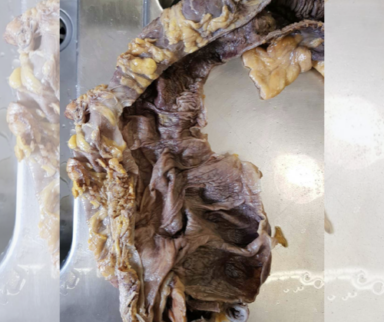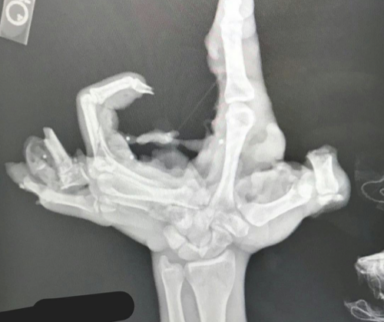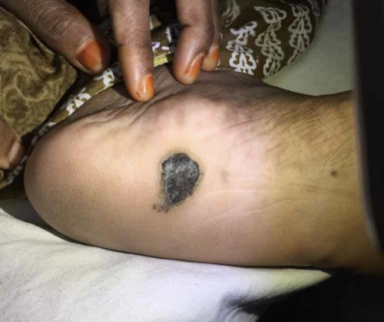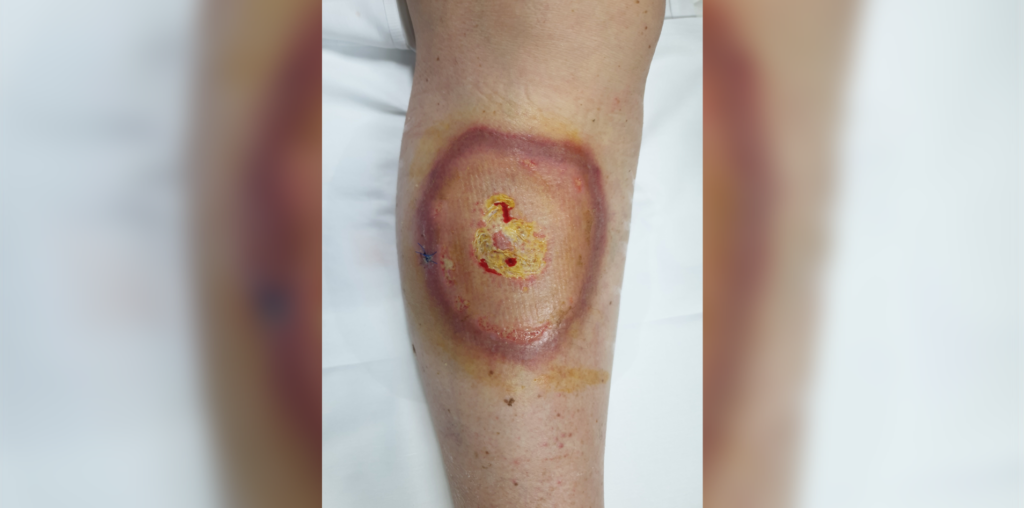
Every year physicians and healthcare professionals on Figure 1 share cases of rare conditions and presentations — ones that many healthcare professionals never imagine they’ll see in real life.
But in the world of medicine, you never know what you’ll discover. Here are the five most interesting medical cases of rare conditions and presentations from the past year.
#5. Necrobiosi Lipoidica

A 48-year-old person with diabetes is sent to infectious disease for lesions described by the patient as, “solid not painful nodule that slowly expanded as in the pictures after being bitten by something (maybe a mosquito) while she was walking in a rural road with her dog,” and explained by the Figure 1 member, an infectious disease resident, who shared this case.
Following unsuccessful courses of doxycycline and amoxicillin/clavulanate, a skin biopsy for suspected cutaneous leishmania came back negative. “An infiltrate of lymphocytes and eosinophil was described. Blood values in range with just a small raise of CRP,” added the infectious disease resident.
Commenters suggested granuloma annulare, or pyoderma gangrenosum as differentials.
One dermatologist chimed in saying, “I agree with my colleagues that pyoderma gangrenosum was my first thought, and needs very careful consideration. Necrobiosis lipoidica may ulcerate, and a biopsy from the nonulcerated edge would be helpful. In the interim, excellent wound care and avoid any trauma to the lesion. Very interesting, and we all would appreciate follow up!”
The resident who shared the case kept everyone updated — confirming that after another cutaneous biopsy, the patient tested positive for necrobiosi lipoidica — and thanked everyone for their help identifying this rare condition.
#4. Congenital Ectropion Uveae
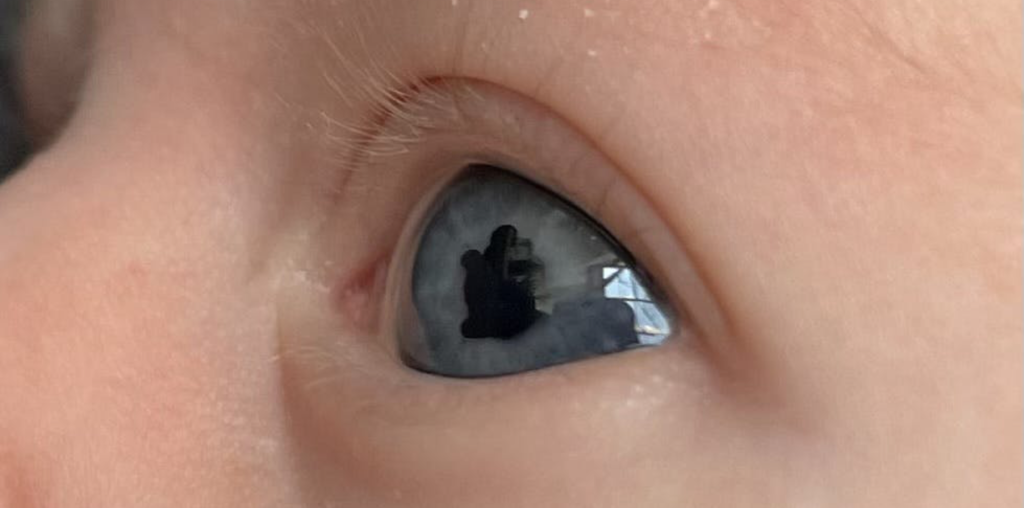
The Figure 1 member and pediatric resident who originally published this case shared, “3-week-old male with avg weight gain of 15 g/day from birth with this eye finding, bilaterally. Noticed by mother at birth but didn’t bring it up until recently. No photophobia. Pupils respond to light. Sent the infant to see ophthalmology.”
Following a visit to the ophthalmologist, the child was diagnosed with bilateral congenital ectropion uveae and was then referred to genetics for further testing.
Comments on the case ranged from, “Great photo. Never seen this before,” to, “As a paramedic I don’t get this kind of exposure. Thank you endlessly for sharing.”
Have you ever seen this rare condition?
#3. Macroglossia
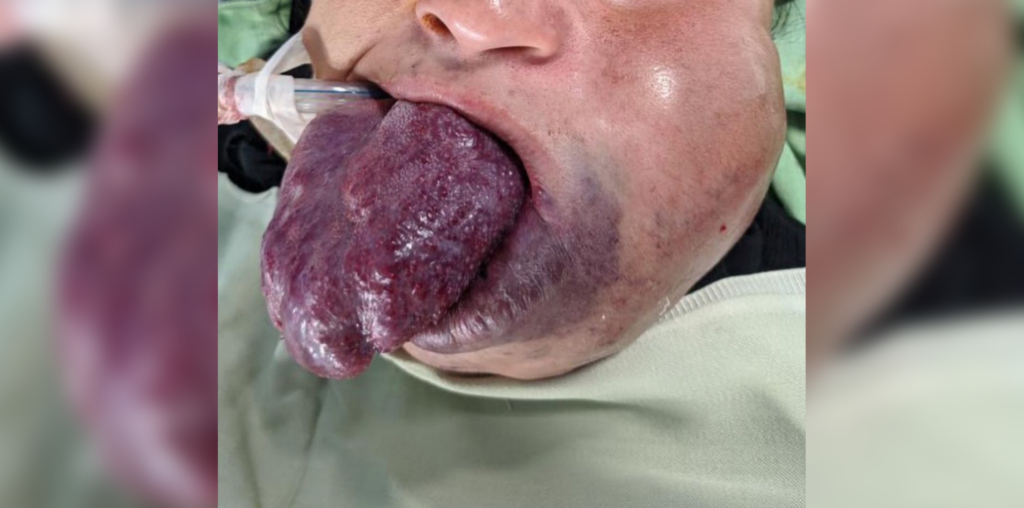
In the third case of a rare condition, a rheumatologist and Figure 1 member shared the case of a “48-year-old male patient with amyloidosis who had to be intubated due to a large macroglossia that obstructed the airway.”
A registered nurse who commented on the case asked for more details. “It looks like his tongue is compromised, based on the dusky coloration. Will he be able to prevent losing it? How do you treat this? He looks bruised around his mouth as well.” The rheumatologist who shared the case replied, “Corticoids should help the swelling and there was some self-immune reaction involved.”
View the case and leave your questions and comments
#2. Sternal Tracheotomy
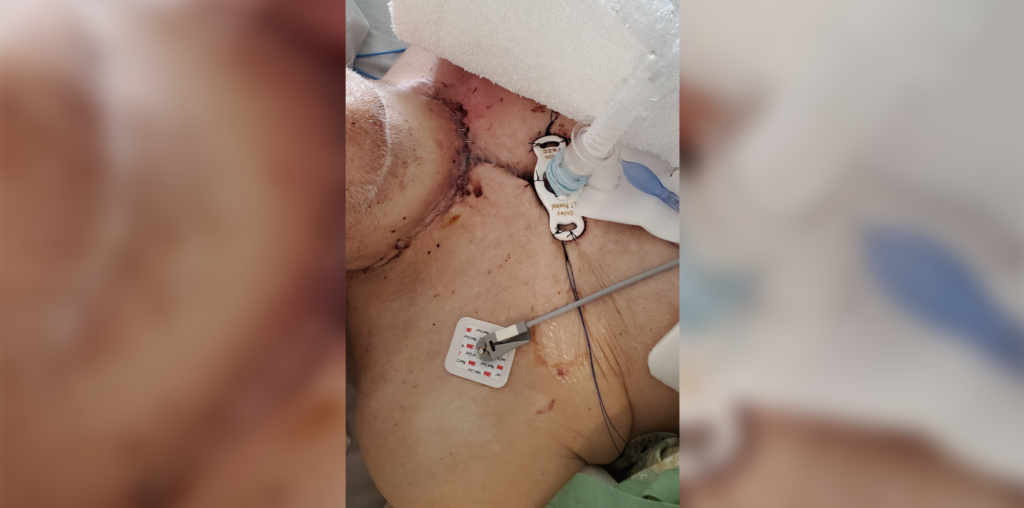
This sternal tracheotomy is not a presentation seen every day.
The Figure 1 member, a registered nurse, who shared this case provided these details: “Patient with history of glottic squamous cell carcinoma. Tx then developed bilateral glottic mass with extension into subglottis. Total laryngectomy, pharyngectomy, and cervical esophagectomy performed. Later developed pharyngocutaneous fistula above the stoma. Patient now s/p sternal ‘trach.’ Site was created by drilling through sternum, inserting free flap with vein and artery intact from forearm. Site is actively vascularized. Patient chance of survival without procedure 0%. Survival with procedure 25%. Fistula removal, neck dissection and flap created by head and neck cancer team. Sternal drill site created by cardiac surgeon.”
Comments on the case included, “Wow! Such an interesting case!! I’ve never seen a sternal trach!” and “I didn’t know that was possible.”
When asked if sternal tracheotomies were rare, the registered nurse who published the case replied, “From what I was told by the surgeon, he knew of only 3 cases that had been ‘successful.’ Those 3 did not ever leave the hospital and did not survive past 1 year.”
Find out what happened to this patient
#1. Occipitocervical Dissociation
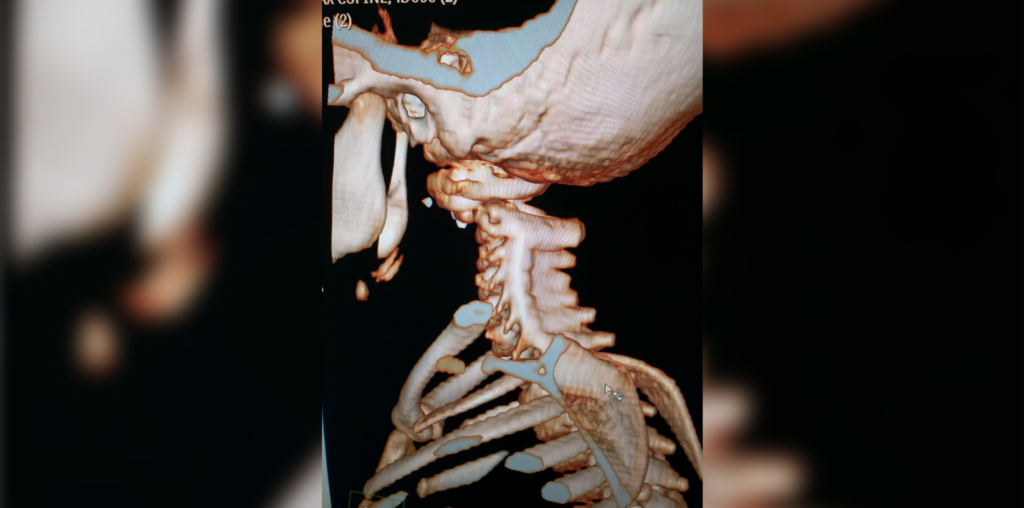
And our top most interesting rare condition of the past year is an occipitocervical dissociation, or internal decapitation.
Here’s what the Figure 1 member and technologist who published the case shared, “[22-month-old patient] was brought in by ambulance, on stretcher, no collar, from [a motor vehicle accident].” It was confirmed that the child was in a properly fitted car seat. “She was extremely calm and didn’t attempt to get up or move around in the bed. Although she was capable of moving all extremities and was completely responsive. These are reconstructed images from her CT of [cervical spine].”
The response from other members was understandably shock, with one paramedic commenting, “I wouldn’t have thought that is what an internal decapitation would look like! Unbelievable!”
Fortunately, this story had a happy ending. After being airlifted to a pediatric trauma center, the technologist shared that the patient had “surgery to fuse c1 and 2 on day 4 post accident and is expected to be in a halo for 6 weeks and make a full recovery.”
Published December 19, 2022
Join the Conversation
Sign up for Figure 1 and be part of a global community of healthcare professionals gaining medical knowledge, securely sharing real patient cases, and improving outcomes.
